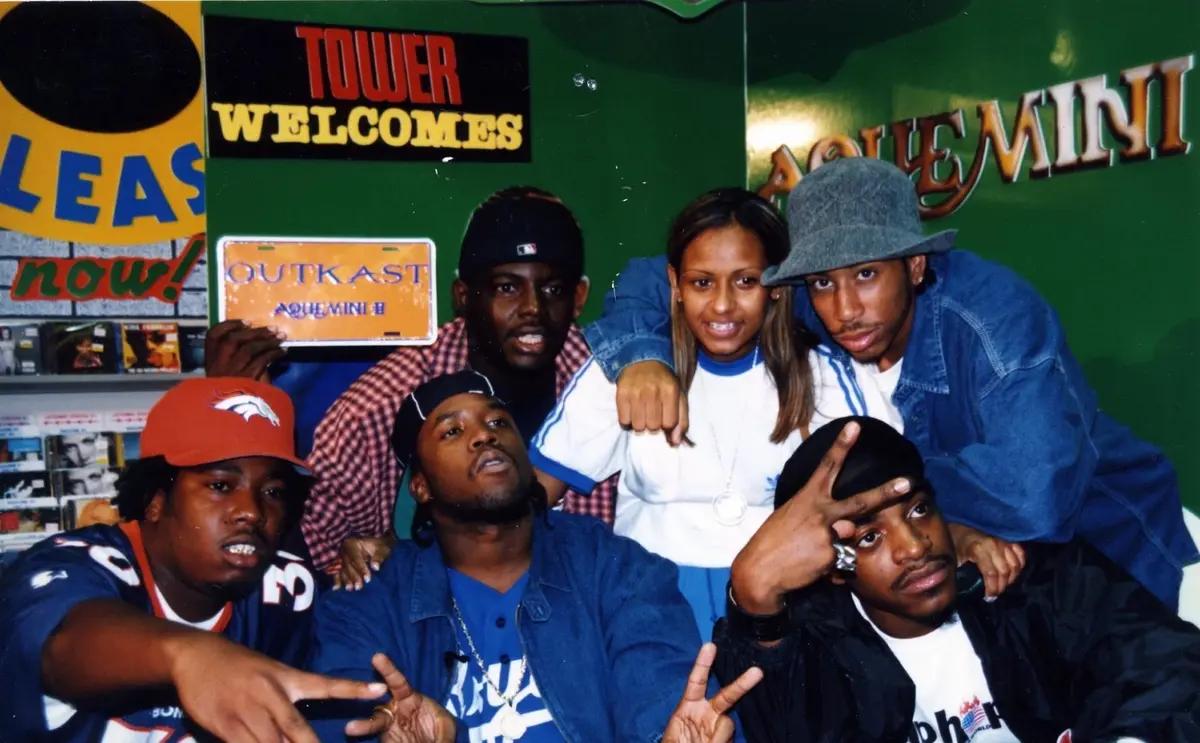Planet Fitness: Anthropo-Frontierism and the Survival of the Fittest
|Miles Gertler & Igor Bragado
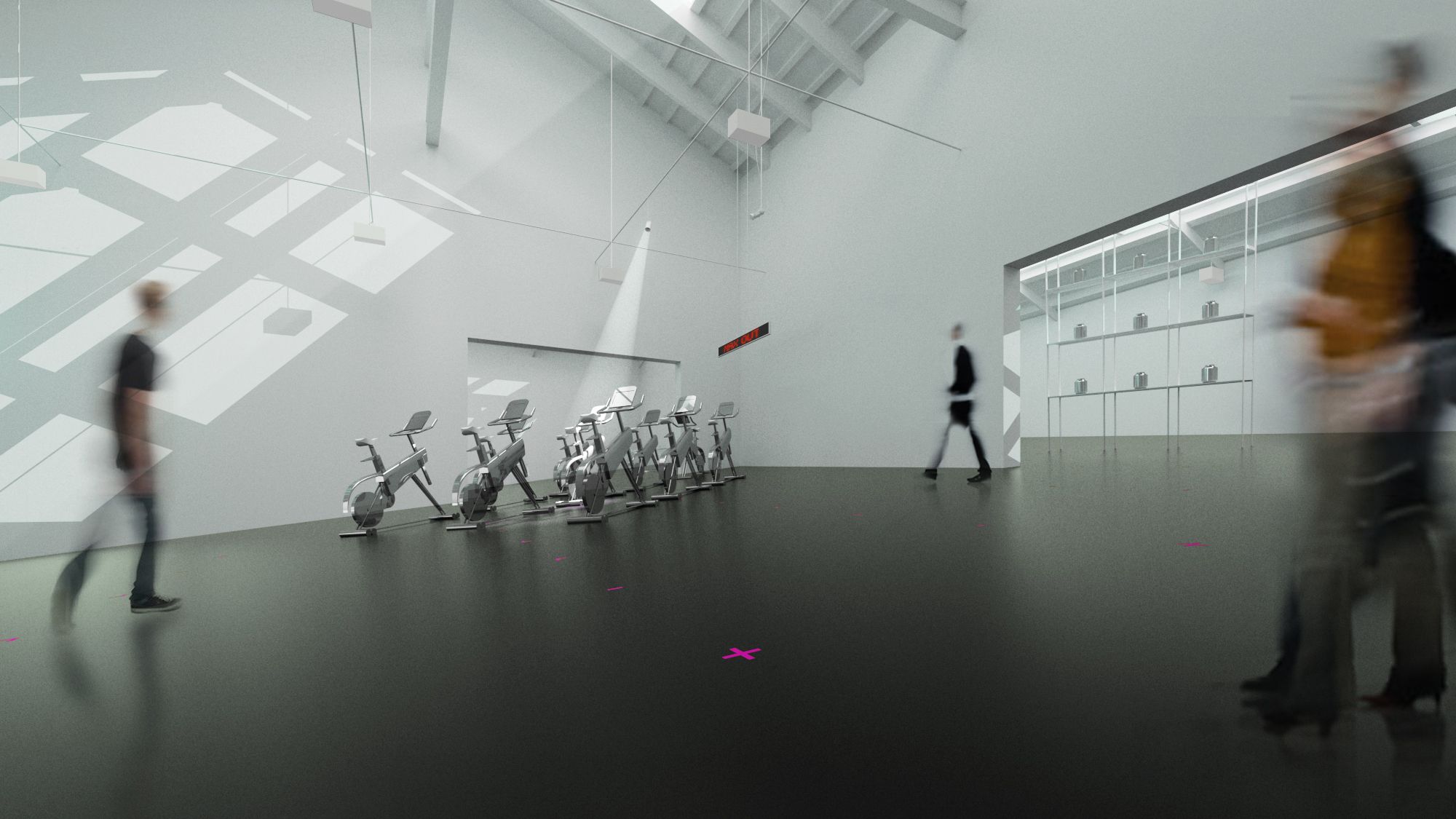
Beyond the geological axis of the Anthropocene discourse, we have, for much of this year, been preoccupied with the epoch’s psycho-cultural ramifications. In this essay published by Log, available here in its full print version, Miles Gertler and Igor Bragado, founders of the conceptual design practice Common Accounts, examine the function of fitness as both an antidote to contemporary environmentally-induced anxiety and a somatic coping mechanism to the intensifying climate emergency.
The ultimate frontier of the Anthropocene might well be the human body. Or so it seems, according to a freshly available arsenal of fitness regimens, survival guides, academic reports, news media, and cultural products, which demonstrate an impulse to connect the fitness of the body with its capacity to resist climatic failure.
Take Pure Advantage, an environmental research and lobbying group founded by fitness mogul Phillip Mills, who argues that the fitness of the individual is a critical component in global environmental health. Mills funded documentaries like The Human Element, which explore people’s relationships with climate change, and his fitness program Les Mills – which is “on a mission to create a fitter planet” – marries strength conditioning with the construction of virtual terrains like The Trip, described as “a completely new cycling experience using digital projection to create new worlds.” The Les Mills website declares, “The battles to tackle global physical inactivity and prevent climate change are inextricably linked, with neither likely to succeed unless holistic and sustainable solutions can be sought,” and Mills himself told an interviewer, “We have to deal with [climate change] urgently. And it just so happens that a lot of the ways that we can fix it are things that are really good for us, good for our health and good for the environment.” In 2007, Mills published Fighting Globesity: A Practical Guide to Personal Health and Global Sustainability, and he’s not alone in claiming the resilience of the body as a lifeboat to counter the instability of the planet.

#newfrontiers
If the Anthropocene represents an existential threat, then it is somewhat paradoxical that, faced with the possibility of humankind’s demise, the individual body is more present than ever. A focus on the body that prioritizes individual performance and status seems out of place at a moment when the entirety of humanity is under threat. In cultural discourse, politics, and the popular imaginary, human anatomy is more visible and available as a subject for modification, regulation, and design than ever before. From the surgeon’s clinic to Facetune, through gut health and biohacking, and from the bedroom to Equinox, the body is under near-constant scrutiny, searching for new sites of value, be it social, material, or otherwise.
As a result, a frontierist attitude has been projected onto the body: an anthropo-frontierism that regards the fitness of the body as a useful technology. Among its proposed uses is to function as a lifeboat, escaping the consequences of planetary environmental collapse in the mode articulated by Les Mills. Anthopo-frontierism mirrors the logic of American frontierism – that is, the Wild West spirit of territorially progressive exploitation and technological development attendant to the feverish pursuit of expansive new terrain, where the survival of the fittest generally superseded collective concerns. In its endlessness pursuit of resources to exploit, frontierism ultimately produced the carbon paradigm that drives markets today. Frontier individualism and the prioritization of the self are both cause and consequence of the global carbon paradigm and its attendant crises. The consequences of this paradigm have in many ways provoked a call for collective action, but anthropo-frontierism has in parallel articulated an individualized, niche mode of resistance to the cataclysmic at the scale of the body: climate fitness. In other words, as a Les Mills slogan puts it, “fitter you, fitter planet.”

#fitteryoufitterplanet
If the environment is being degraded, then, at the very least, the body can be recalibrated to be its very best – better able to mitigate the effects that industrialization and pollution might have caused. Daily life increasingly appears to involve optimizing and defending of the body against environmental threats to its most basic functions. In the US, the number of people with gym memberships has nearly doubled since the turn of the century. More and more gyms continue to open, augmented by nutritional supplement retailers, athleisure distributors, lifestyle consultants, and purification technologies for the home and the body. Face masks that protect against respiratory pollutants and the spread of airborne virus have become an unlikely fashion staple, particularly in urban Asian areas where heavy industry regularly alters the atmospheric composition.
#culturismo
Author Michael Anton Budd argues that fitness culture and the project of colonialism are inextricably linked. “As the late-nineteenth-century imperial land grab accelerated, Britain’s pre-eminent position began to be threatened by US and German economic competition. Fitness entrepreneurs relied upon the fears of British decline and expanded their ambitions to an imperial scope.” Imperialism, he argues, was “intimately connected within physical culture’s romanticized, aggressive and redemptive conception of empire.” Enlisting in the late 19th-century African wars was a part of physical culture, and the rhetorical mechanisms behind fitness and colonialism were one and the same. Budd writes in The Sculpture Machine: Physical Culture and Body Politics in the Age of Empire, “The reasons behind this rush to enlist cannot entirely be attributed to ‘patriotism’ pure and simple. . . . Such rises in numbers may be more meaningfully linked to interests that shaped physical culture.”
In colonialism the body was a vehicle to reach the frontier. In the Anthropocene, the body becomes the frontier itself. This change comes from recognizing that the myth of the infinite territory is now suddenly impossible in the context of climate change. But colonialist practices didn’t die, they were transformed, prospecting new terrains for external economic growth opportunities. Climate change itself has changed the location and nature of the “frontier,” reframing fitness as an episodic behavior on the broader spectrums of life and death, self-construction and deconstruction.
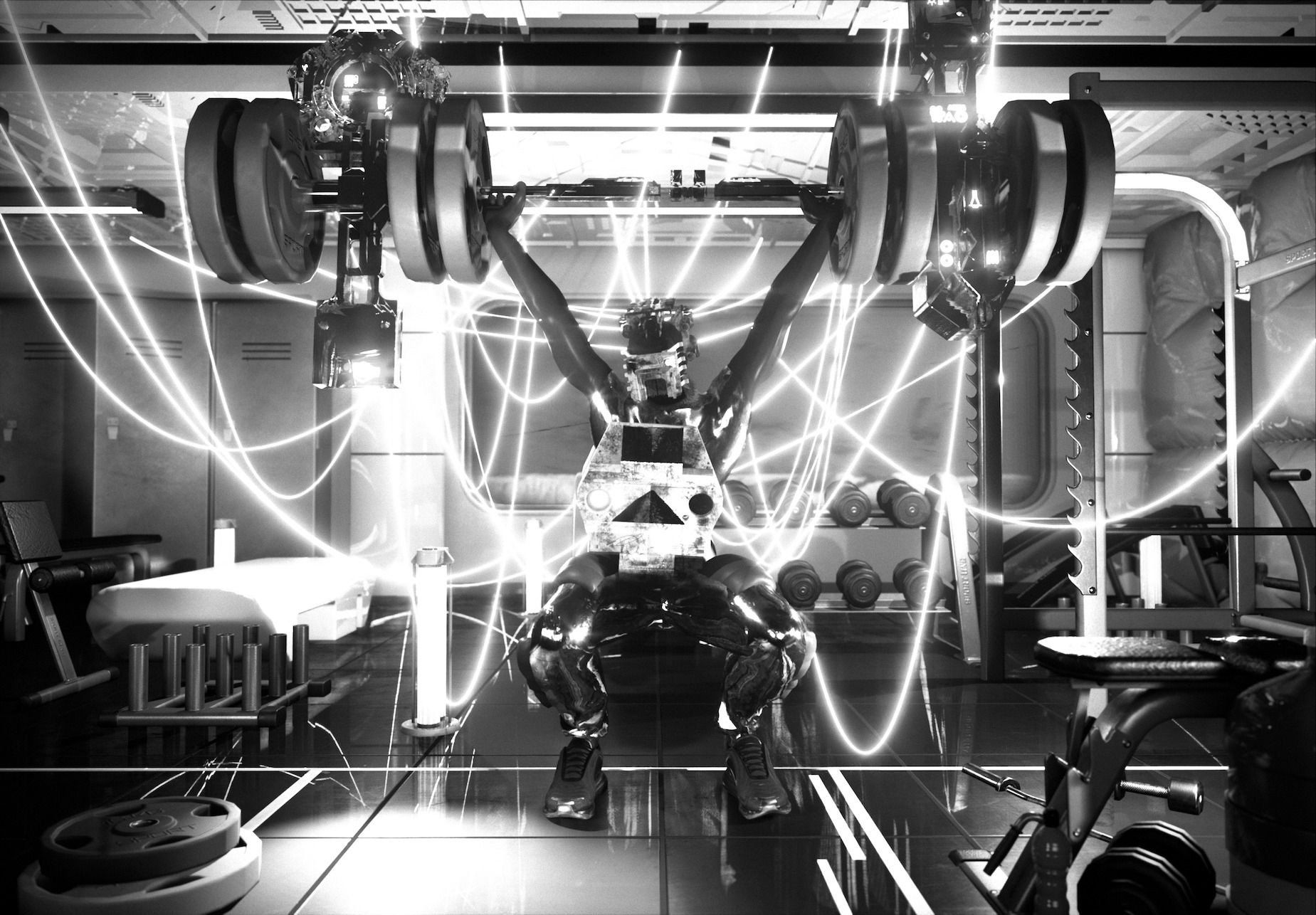
#thepowerofplacebo
If fitness has emerged as a coping mechanism for the prospective extinction of the species, then the behaviors we observe may well become more exaggerated as we approach and pass 2030, when the UN IPCC says the window for action to prevent irreversible and cataclysmic climate change will shut. With no solution yet emerging to address, let alone solve, the problem at the scale of society, individuated responses may be misdirected and inadequate, yet they demonstrate the necessity of existential placebo to overcome the mounting anxiety of environmental collapse.
Consider the survival mentality of bootcamp fitness programs, the call to training that a nearness to death or illness can provoke, and the explosion of wellness as a luxury product. While the persistence of the species has never looked so uncertain, the promise of life-extending pharmaceutical regimens and cryogenic stem-cell injections guarantee to at least defer your own expiration – if you can afford them.
In The Building in Pain: The Body and Architecture in Post-Modern Culture (AA Files, Spring 1990), Anthony Vidler observed that the subject of the postmodern gym was a body whose finitude was ever in question: fitness alone could not render the body whole. And in many ways, the cultural priority of the gym today reifies Rem Koolhaas’ statement from his ANY 27 essay, Junkspace, that “the cosmetic is the new cosmic,” as technologies of self-construction bring the possibility of immortality through the promise of virtual perpetuity (“cyberspace has become the great outdoors. . . . Is each of us a mini-construction site? Mankind the sum of 3 to 5 billion individual upgrades?”). In this context, the #shredded, hyper-muscular body constitutes a carbon form.


#gymselfie
Of course, the ubiquity of digital images encourages the vanity complex. Neuroscientific studies of social media use indicate that vain behavior is rooted in strategies to generally improve the odds of survival. New research suggests that we regularly demand value from sustained engagement with social media, which capitalize on preexisting social drives. A 2015 report titled “The Emerging Neuroscience of Social Media” indicates that “people are driven to connect with others and manage their reputation, and likely derive significant adaptive advantages from doing so. Indeed, finding ways to fulfill our need to belong to a social group may be as important to our survival as fulfilling our basic biological needs, such as obtaining food and sex. Living as part of an interconnected group enhances reproductive success by providing access to potential mates, and enhances physical survival by providing increased safety from potential predators, as well as providing access to the fruits of communal agriculture and cooperative hunting efforts. . . . Groups increase the potential to not only survive, but also thrive.”
These “soft” values are made evident at the anatomical scale through the neural responses associated with “social cognition (i.e., mentalizing), self-referential cognition, and social reward processing.”
Dopamine stimulation and serotonin production are signals of positive returns in the landscape of social resource exploration. Since the smart phone is for so many people a prosthetic enhancement, we ought to consider its neural and social consequences as part of the anthropo-frontierist effort. They are certainly a critical agent in today’s arena of self-construction.
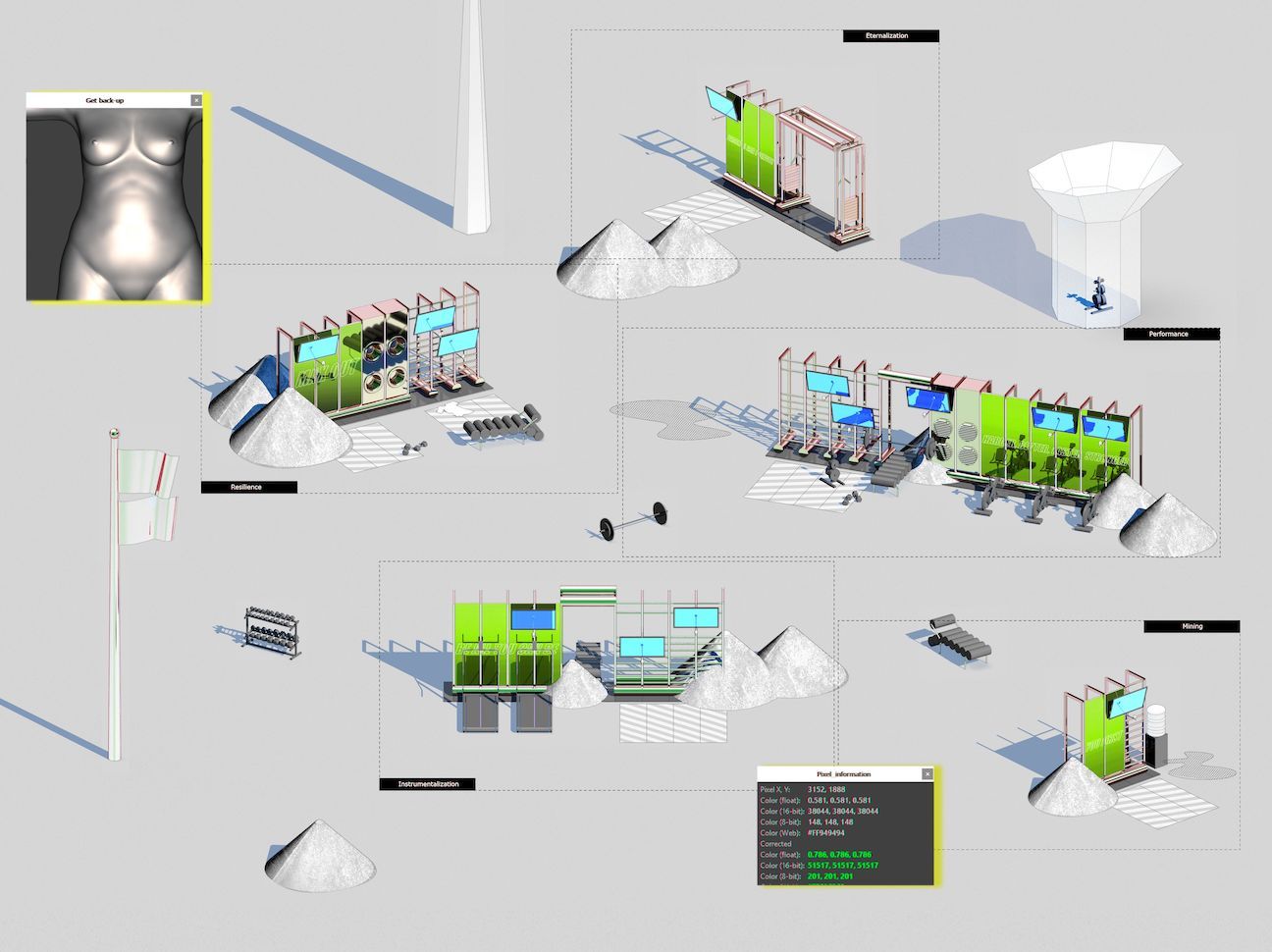

#yourenotevenalive
Canadian artist, singer, and producer Grimes has produced an aesthetic project in the ethos of anthropo-frontierism. Grimes, along with boyfriend Elon Musk, is part of a group for whom civilizational collapse forms an intellectual engine. If Musk’s SpaceX is a company founded “with the ultimate goal of enabling people to live on other planets,” arguably due to the future uninhabitability of our own, Grimes’ aesthetic explores the production of images of the augmented self in a mode that tracks with Mark Wigley’s 2001 assertion in Network Fever that “the evolution of technology is the evolution of the human body.”
Amid the summer 2019 release of her latest album, Miss_Anthropocene – “a concept album about the anthropomorphic goddess of climate change . . . each song will be a different embodiment of human extinction,” she wrote on Twitter in March 2019 – Grimes’ own Instagram demonstrated precisely the artist’s aesthetic project as it is enacted through her own body: a form of advanced survivalism through an overload of self-design. In a post from July of that year, which has since been deleted, Grimes, clad in athleisure apparel, cites a new partnership with Adidas as she kneels on a rock and looks toward a menacing sky. The caption reads:
ADIDAS: Tell us about ur training regimen?
GRIMES: My training is a 360 approach. I first maintain a healthy cellular routine where I maximize the function of my mitochondria with supplements such as NAD+, Acetyl L-Carnitine, Magnesium, etc. This helps promote ATP and it’s incredibly visceral. From that point I spend 2–4 hours in my deprivation tank, this allows me to “astro-glide” to other dimensions – past, present, and future. In the afternoons I do a 1–2 hour sword fighting session with my trainer, James Lew, we go over the fundamentals that work the obliques, core stabilizes, and triceps as well as a few tricks. To wind down from this I spend 30–45 minutes on an inclined hike at roughly 4–4.5 miles per hour, arguably the most efficient workout. I then spend 45 minutes stretching before heading into the studio where my mind and body are functioning at peak level, with a neuroplastic goal between 57.5 and 71.5 AphCs (which is my preferred range for my blood type). I’ve outfitted my studio with the highest grade of red light. It is pretty much 1000 sqf IR Sauna.
Hana then comes over and we do a screaming session for 20–25 minutes while I slow boil the honey tea that maximizes vocal proficiency. I have also eliminated all blue light from my vision through an experimental surgery that removes the top film of my eyeball and replaces it with an orange ultra-flex polymer that my friend and I made in the lab this past winter as a means to cure seasonal depression. I go to bed with a humidifier on.
In the music video for “We Appreciate Power,” Grimes gives form to her aforementioned regimen and literal meaning to the “360 approach.” She variously presents herself and her collaborator, Hana, on a rotating platform, clad in catsuits, their anatomical prowess accentuated as if drawn in manga, further equipped with an arsenal of swords, bows, and guns. Their optimized bodies are exhibited in the round – as a design product – prepared to endure a host of existential threats. “Elevate the human race, putting makeup on my face. . . . Come on you’re not even alive, if you’re not backed up on a drive,” she sings.
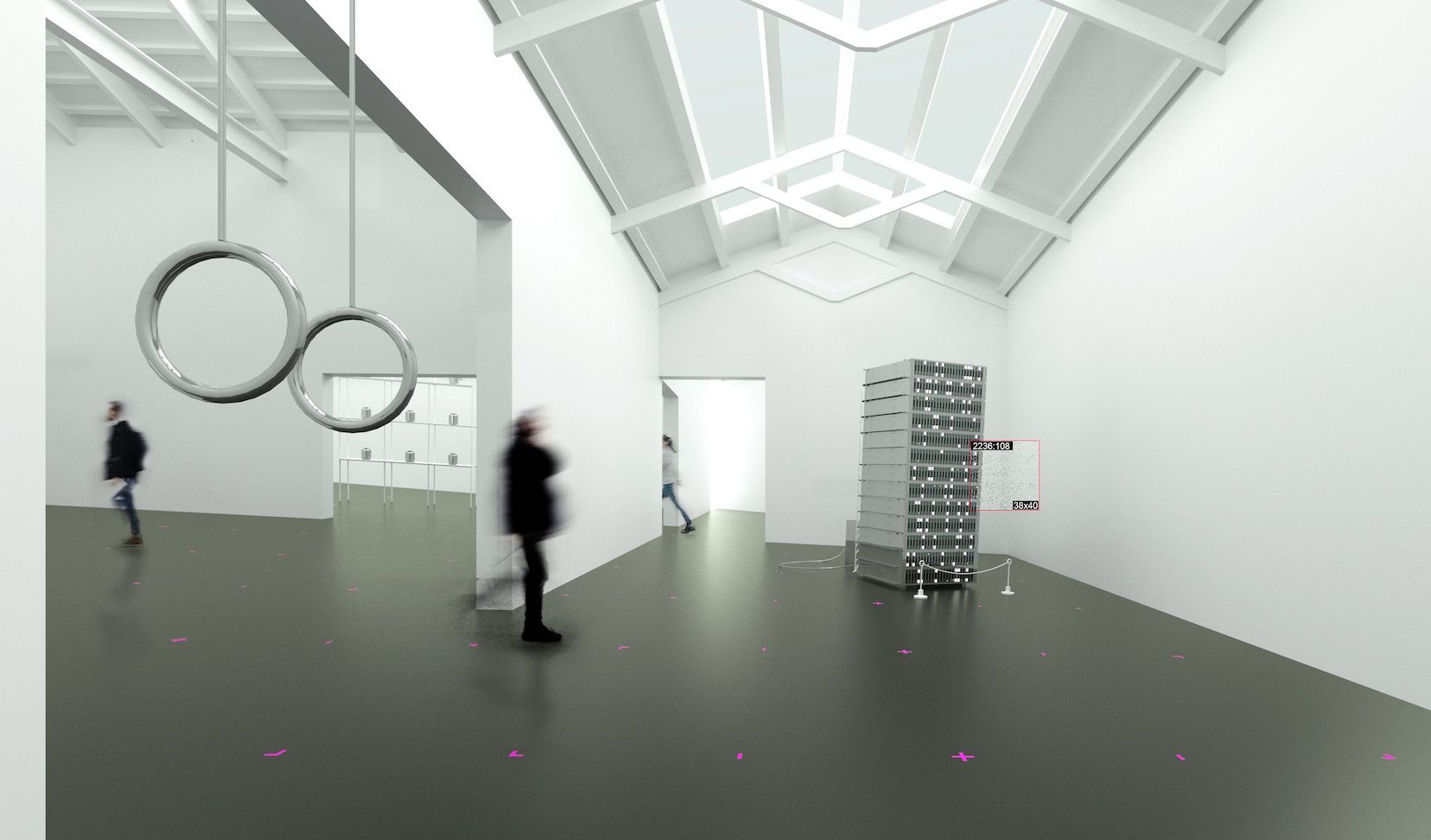
#nolifeboat
In her 2012 Artforum essay “Vanishing Point,” Sylvia Lavin writes that “In the complex ecology that characterizes our contemporary culture of excess . . . evidence of irrelevance instead lies in overproduction and superexposure: A new typology now waxes when it is on the wane.” Facing instability and the prospective destruction of the environment as we know it, the individual has become both ubiquitous terrain and agent of its own colonization. As capitalism’s last terrestrial frontiers are exhausted, its prospective gaze has turned to other domains. The defense of the self from ourselves will undoubtedly continue to be an increasingly complicated problem of daily life. The desire to extract value from the body is necessarily entangled with a new aesthetic of the self that variously celebrates virgin resources where external sources face depletion, and, adversely, systemic escape from the paradigm that resource extraction continues to feed. This attitude inhabits the logic of carbon capitalism itself and exacerbates a preoccupation with the self that may only signal its own demise. It points to an obsession with an aesthetic of the body as a lifeboat, when ultimately none may be available.
Founded by Miles Gertler and Igor Bragado at Princeton University in 2015, Common Accounts is an art and design research practice. Their work examines the intersections of the body with spaces both online and IRL, and considers extra-architectural material that often passes below the radar of the discipline. They are recognized for their work in the design of death and the virtual afterlife, including “Three Ordinary Funerals,” a prototypical home for the virtual afterlife, and “the Refresh, Renew Pavilion,” a funerary catafalque for the digital age.
SEE ALSO: 032c #37 cover dossier, “BLACK HOLE CATALOG”
Credits
- Text: Miles Gertler & Igor Bragado
